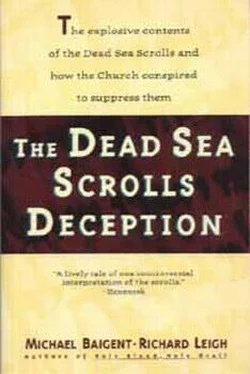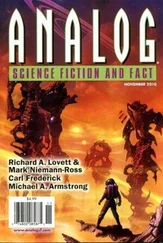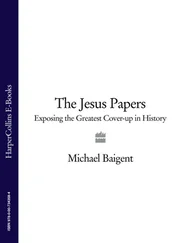With this scenario in mind, Eisenman turned to the Dead Sea Scrolls, and particularly the ‘Habakkuk Commentary’. When the fragmentary details of the Qumran texts had been assembled into a coherent sequence, what emerged was something extraordinarily similar to the chronicle of Acts, Josephus and early Christian historians. The scrolls told their own story, at the centre of which was a single protagonist, the ‘Teacher of Righteousness’ — an exemplar of the same virtues associated with James. Like James, the ‘Teacher’ was the acknowledged leader of a ‘sectarian’ religious community whose members were ‘zealous for the Law’. And like James, the ‘Teacher’ had to contend with two quite separate and distinct adversaries.
One of these was dubbed the ‘Liar’, an outsider who was admitted to the community, then turned renegade, quarrelled with the ‘Teacher’ and hijacked part of the community’s doctrine and membership. According to the ‘Habakkuk Commentary’, the ‘Liar’ ‘did not listen to the word received by the Teacher of Righteousness from the mouth of God’. 22Instead, he appealed to ‘the unfaithful of the New Covenant in that they have not believed in the Covenant of God and have profaned His holy name’. 23The text states explicitly that ‘the Liar… flouted the Law in the midst of their whole congregation’. 24He ‘led many astray’ and raised ‘a congregation on deceit’. 25He himself is said to be ‘pregnant with [works] of deceit’. 26These, of course, are precisely the transgressions of which Paul is accused in Acts — transgressions which lead, at the end of Acts, to the attempt on his life. And Eisenman stresses Paul’s striking hypersensitivity to charges of prevarication and perjury. 27In 1 Timothy 2:7, for example, he asserts indignantly, as if defending himself, that ‘I am telling the truth and no lie’. In II Corinthians 11:31, he swears that: ‘The God and Father of the Lord Jesus… knows that I am not lying.’ These are but two instances; Paul’s letters reveal an almost obsessive desire to exculpate himself from implied accusations of falsity.
According to the Dead Sea Scrolls, the ‘Liar’ was the adversary of the ‘Teacher of Righteousness’ from within the community. The ‘Teacher’s’ second adversary was from outside. This was the ‘Wicked Priest’, a corrupt representative of the establishment who had betrayed his function and his faith. 28He conspired to exterminate the ‘Poor’ — those ‘zealous for the Law’ — said to be scattered about Jerusalem and other places. He harried the ‘Teacher of Righteousness’ wherever the ‘Teacher’ sought refuge. At the hands of the ‘Wicked Priest’s’ minions, the ‘Teacher’ suffered some serious injury and possibly — the text is vague on the matter — death. Subsequently, the ‘Wicked Priest’ was himself assassinated by followers of the ‘Teacher’, who, after killing him, ‘took vengeance upon his body of flesh’ — that is, defiled his corpse. 29The parallels between the ‘Wicked Priest’ of the scrolls and the historical figure of the high priest Ananas are unmistakable.
In his book on James, Eisenman explores these parallels — James, Paul and Ananas on the one hand, the ‘Teacher of Righteousness’, the ‘Liar’ and the ‘Wicked Priest’ on the other — in exhaustive detail. He goes through the ‘Habakkuk Commentary’ and other texts line by line, comparing them with information vouchsafed by Acts, by Josephus and by early Christian historians. In our own pages, it would be impossible to do adequate justice to the weight of evidence he amasses. But the conclusions of this evidence are inescapable. The ‘Habakkuk Commentary’ and certain other of the Dead Sea Scrolls are referring to the same events as those recounted in Acts, in Josephus and in the works of early Christian historians.
This conclusion is reinforced by the striking and pervasive recurrence of Qumranic philosophy and imagery in Acts, in the Letter of James and in Paul’s copious epistles. It is also reinforced by the revelation that the place for which Paul embarks and in which he spends three years as a postulant is in fact Qumran, not the city in Syria. Even the one fragment that would not, at first, appear to fit — the fact that the persecution and death of James occurs quite specifically in Jerusalem, while the Dead Sea Scrolls have been assumed to chronicle events in Qumran — is explained within the texts themselves. The ‘Habakkuk Commentary’ states explicitly that the leadership of the community were in Jerusalem at the relevant time. 30
There is another point which Eisenman stresses as being particularly important. In the Letter to the Romans (1:17), Paul states that ‘this is what reveals the justice of God to us: it shows how faith leads to faith, or as scripture says: the upright man finds life through faith’. The same theme appears in the Letter to the Galatians (3:11): ‘the Law will not justify anyone in the sight of God, because we are told: the righteous man finds life through faith’.
These two statements constitute, in effect, ‘the starting-point of the theological concept of faith’. They are ultimately, as Eisenman says, ‘the foundation piece of Pauline theology’. 31They provide the basis on which Paul is able to make his stand against James — is able to extol the supremacy of faith, while James extols the supremacy of the Law.
From where does Paul derive this principle of the supremacy of faith? It was certainly not an accepted part of Judaic teaching at the time. In fact, it derives from the original Book of Habakkuk, a text of Old Testament apocrypha believed to date from the mid-7th century BC. According to Chapter 2, Verse 4 of the Book of Habakkuk, ‘the upright man will live by his faithfulness’. Paul’s words in his letters are clearly an echo of this statement; and the Book of Habakkuk is clearly the ‘scripture’ to which Paul refers.
More important still, however, is the ‘Habakkuk Commentary’ — the gloss and exegesis on part of the Book of Habakkuk found among the Dead Sea Scrolls. The ‘Habakkuk Commentary’ cites the same statement and then proceeds to elaborate upon it:
But the righteous shall live by his faith. Interpreted, this concerns all those who observe the Law in the House of Judah, whom God will deliver from the House of Judgment because of their suffering and because of their faith in the Teacher of Righteousness. 32
This extraordinary passage is tantamount, in effect, to a formulation of early ‘Christian’ doctrine. It states explicitly that suffering, and faith in the ‘Teacher of Righteousness’, constitute the path to deliverance and salvation. From this passage in the Dead Sea Scrolls, Paul must have derived the foundation for the whole of his own theology. But the passage in question declares unequivocally that suffering and faith in the ‘Teacher of Righteousness’ will lead to deliverance only among ‘those who observe the Law in the House of Judah’. 33It is just such emphasis on adherence to the Law that Paul contrives to ignore, thereby precipitating his doctrinal dispute with James and the other members of the ‘early Church’.
According to Robert Eisenman, the Qumran community emerges from the Dead Sea Scrolls as a movement of a very different nature to that of the Essenes of popular tradition. This movement has centres not just in Qumran, but in a number of other places as well, including Jerusalem. It can exercise considerable influence, can wield considerable power, can command considerable support. It can dispatch Paul, as well as many others, on embassies of recruitment and fund-raising abroad. It can organise riots and public disturbances. It can plot assassinations (such as that attempted on Paul at the end of Acts and, subsequently, that of Ananas). It can put forward its own legitimate alternative candidate for the position of the Temple’s high priest. It can capture and hold strategically important fortresses such as Masada. Most significantly of all, it can galvanise the entire population of Judaea around it and instigate a full-fledged revolt against Rome — a revolt which leads to a major conflict of seven years’ duration and necessitates the intervention not of a few detachments, but of an entire Roman army. Given the range and magnitude of these activities, it is clear that traditional images of the Essenes and of the ‘early Church’ are woefully inadequate. It is equally clear that the movement which manifested itself through the Qumran community and the ‘early Church’ also manifested itself through other groups generally deemed to be separate — the ‘Zadokites’, for example, the Zealots and the Sicarii.
Читать дальше












